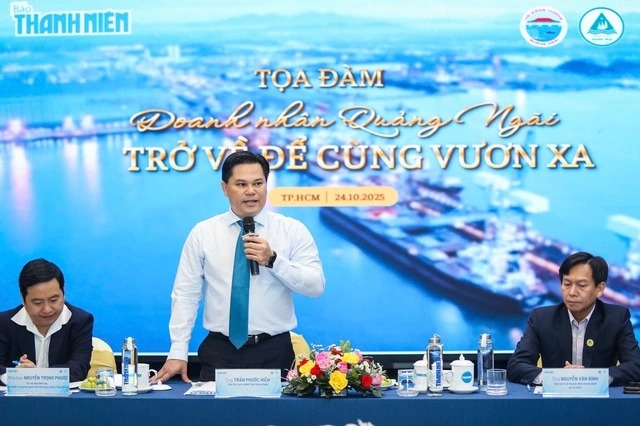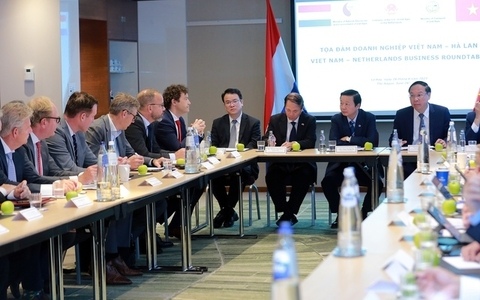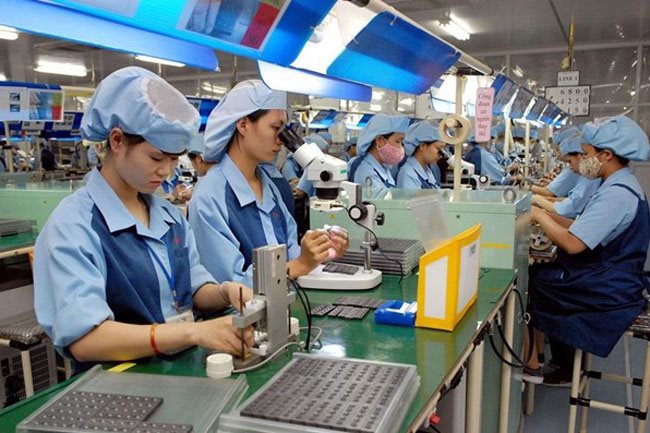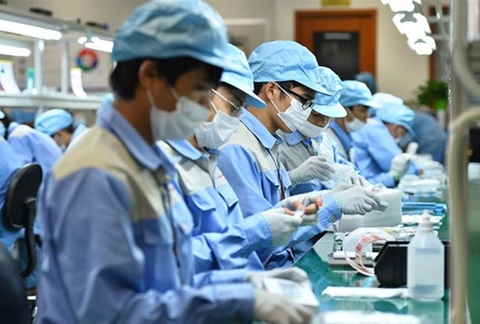Binh Thuan approves new investments worth VND23 trillion
Binh Thuan approves new investments worth VND23 trillion
The south-central coastal province of Binh Thuan gave in-principle approvals to 10 projects worth some VND23 trillion (US$992 million) at an investment promotion conference in Phan Thiet City, the province’s capital, on Sunday.
The province also signed memorandums of understanding on investment pledges for 14 projects worth US$19 billion and VND30.6 trillion (US$1.3 billion) in various sectors.
The Binh Thuan Investment Promotion Conference 2019 brought together some 400 delegates, including Government officials and representatives of local and foreign investors, reported the Vietnam News Agency.
The provincial chairman, Nguyen Ngoc Hai, said in his opening remarks that the province is located in an advantageous position since it is a gateway to the Southeast, Central Highlands and South Central regions and boasts a 200-kilometer-long coastline.
He noted that a number of key traffic infrastructure projects, especially a highway section linking the province’s Nha Trang City and Dau Giay Town in Dong Nai Province, are being developed in the province. Earlier this year, the VND2.3-trillion Vinh Tan International Port was put into operation.
These factors made the province a promising destination with favorable conditions for investors to do business, he remarked.
At the conference, authorities called for investors to get involved in three key sectors: tourism, the processing and manufacturing industries and high-tech agriculture.
Phan Nguyen Hoang Tan, deputy director of the provincial Department of Planning and Investment, stressed that Binh Thuan authorities focus on investment in tourism service infrastructure to make it a national tourist destination.
Mui Ne in Phan Thiet City, one of Vietnam’s most beautiful beach resort areas, was zoned as a national tourist destination last year, which enabled the province to attract major investors, according to Nguyen Lan Ngoc, deputy director of the provincial Culture, Sports and Tourism Department.
“They will make Mui Ne one of the leading destinations in the Asia Pacific region,” he said.
Tan added that the provincial government would choose strategic investors with strong financial and investment capacity and experience in using advanced technology in projects, to make a positive impact on locals’ lives and bolster socioeconomic growth in the province.
Therefore, Binh Thuan has called for luxury tourism projects, commercial projects and urban and residential areas. The projects should develop both tourism and the residential community, fostering the well-known tourism brand of “Ham Tien-Mui Ne.”
For processing and manufacturing industries, Binh Thuan is in need of investment in the agricultural, forestry and aquatic sectors; mineral processing; the manufacturing and assembly of electronic equipment; and clean energy.
As Binh Thuan is designed to be a national energy center with a total capacity of over 12,000 megawatts by 2020, it aims to complete its infrastructure system quickly to catch the wave of international investments stemming from the ongoing U.S.-China trade war. It will prioritize investors that employ advanced and environmentally friendly technology.
In the field of agriculture, Binh Thuan has called for smart agricultural projects with the application of modern technology. At the same time, the province is building a value chain for cultivation and husbandry that meets international standards and adapts to climate change.
Enabling administration
Authorities in Binh Thuan Province should pay due attention to building an enabling administration that can address challenges facing both locals and investors, Deputy Prime Minister Truong Hoa Binh told the conference.
The senior Government leader urged the local authority to further build a conducive investment climate and outline attractive policies to attract more strategic investors, with the aim of creating a catalyst for local sustainable development.
To do so, according to Binh, strong planning management should be used in the three core sectors of clean energy, tourism, and high-tech agriculture. He noted that the provincial government should pay more attention to the development plans of coastal urban areas.
As the province has great potential for developing renewable energies, such as wind and solar power, and green tourism, it should work to attract key investments and diversify tourism with high-tech agriculture to create outstanding tourism products, he remarked.
He urged the province to make full use of its resources to accelerate and improve the quality of its economic growth, making it a well-developed locality in the south-central coastal area and the Central Highlands region.
The administrative system must be proactive, supportive and friendly to local residents and businesses, handle corruption strictly and make its policies transparent and interesting to investors, he urged.
He also expressed hope that investors will introduce long-term business strategies and exercise corporate social responsibility, such as protecting the environment and supporting the locals.




















